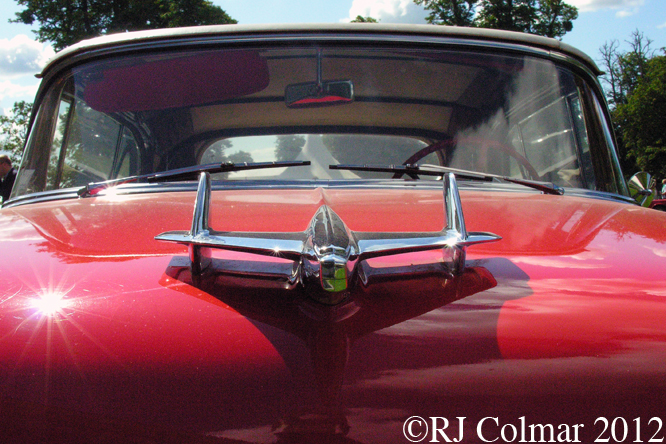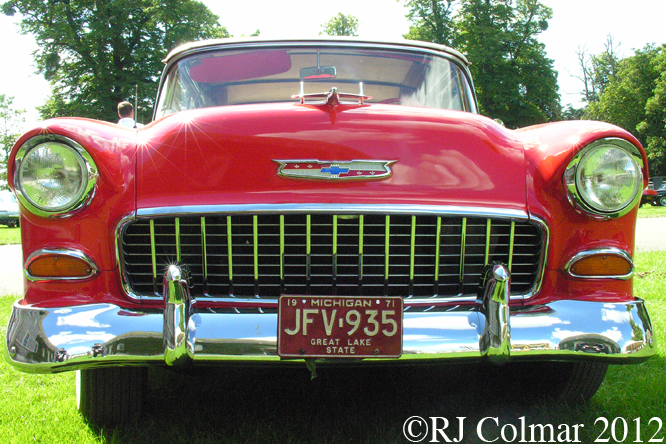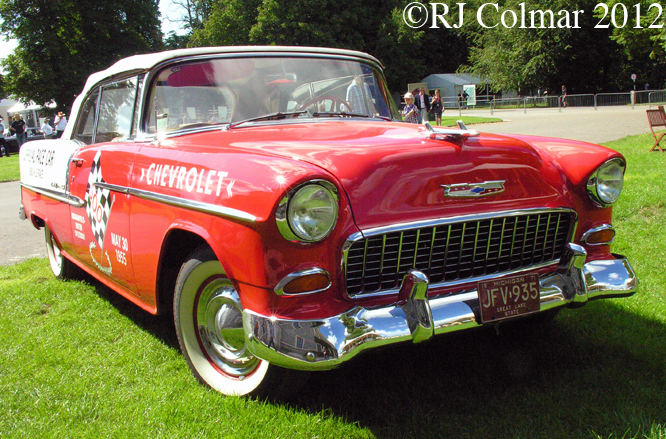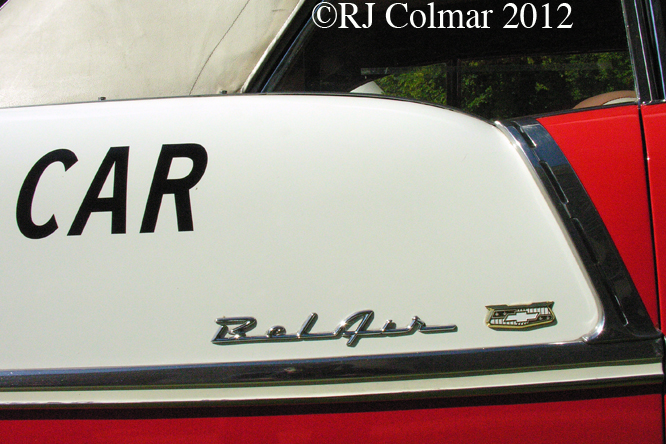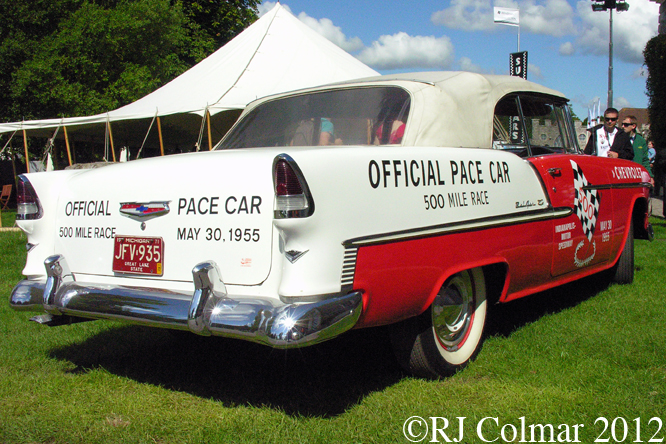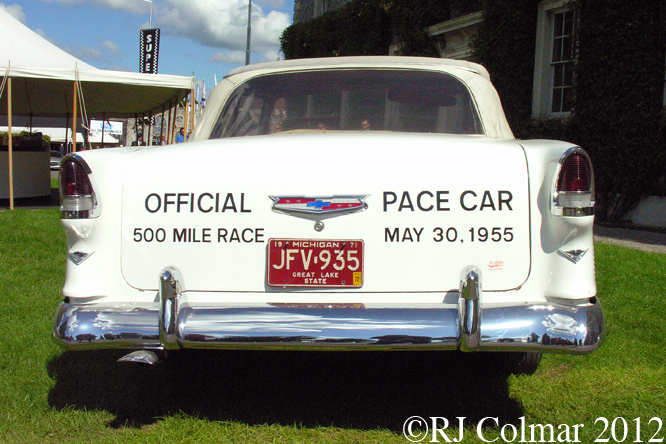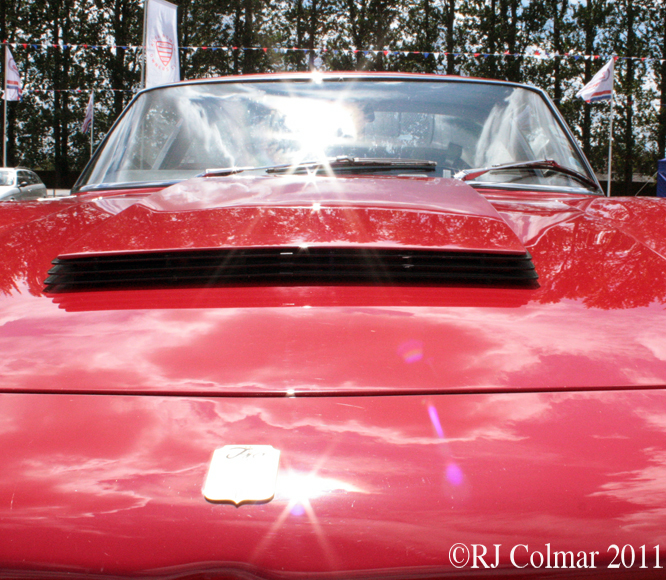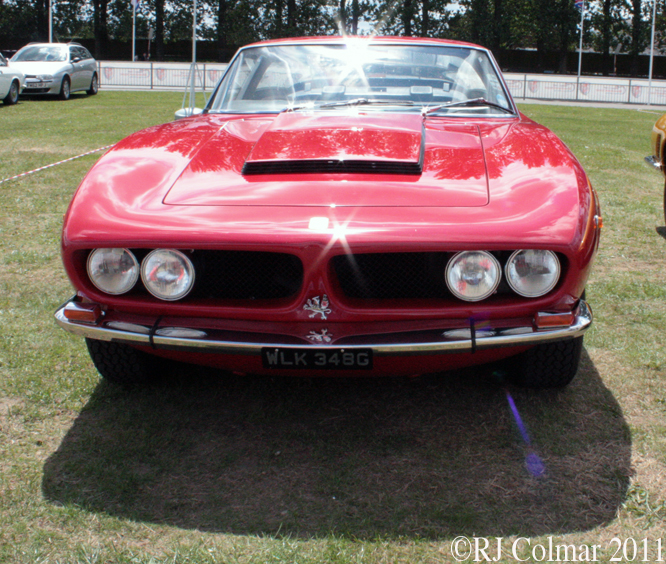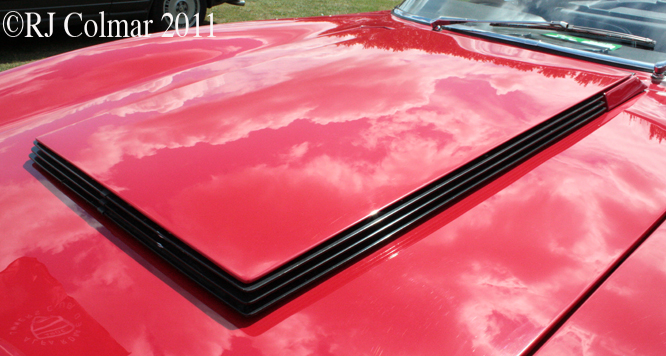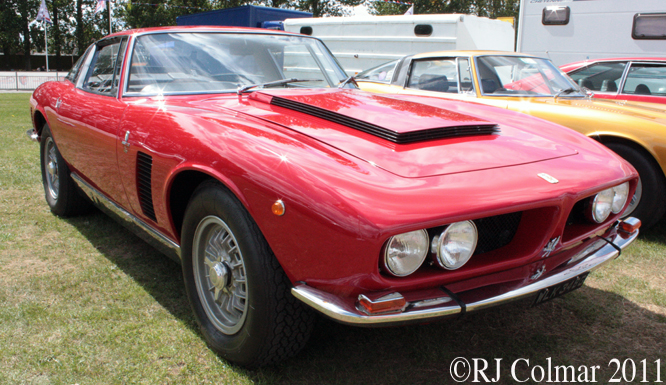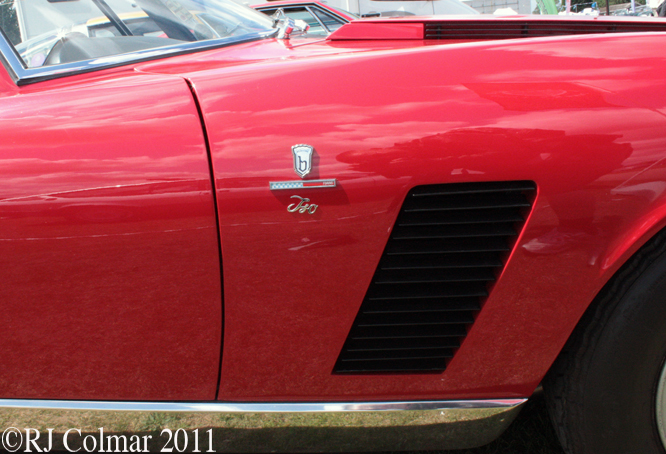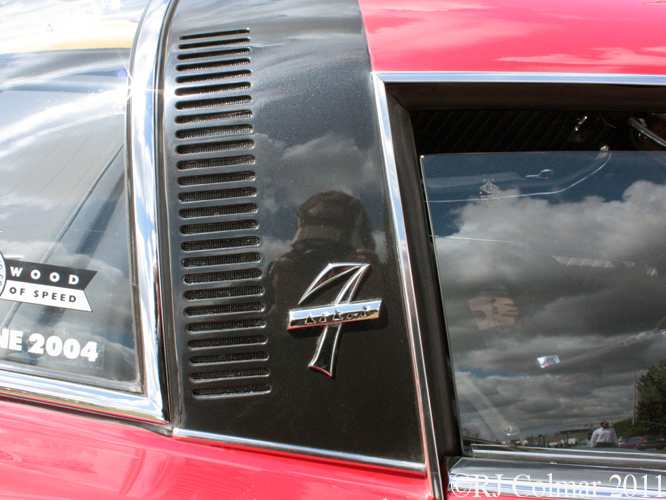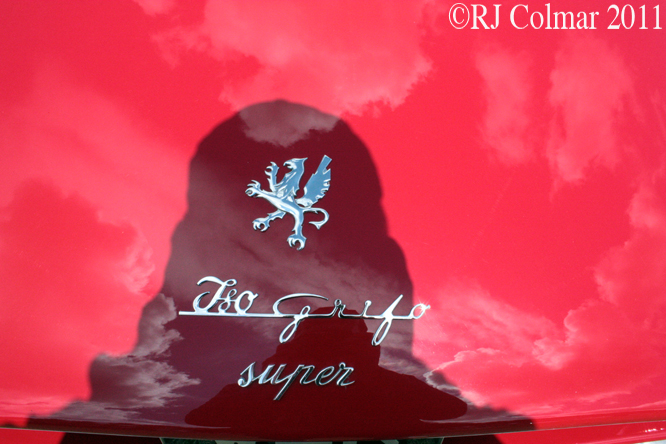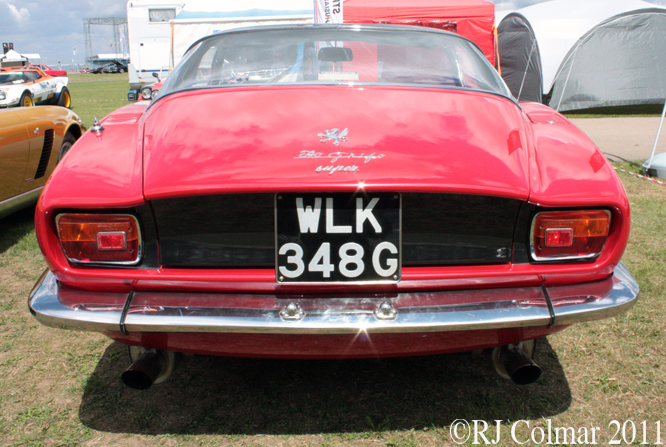For 1955 Chevrolet launched it’s second generation full size Bel Air range, to replace the almost entirely new 1954 Bel Air. with two tone paintwork and for the first time a new 4.3 litre 265 cui V8 ‘small block’ engine option that would remain part of General Motors product mix with many improvements over several decades.
The crisp clean styling of the 1955 Bel Air was set off by a Ferrari inspired chrome square potato chip grill as seen on the car below photographed at last years Goodwood Festival of Speed.
Alongside two straight six motor options the new ‘small block’ came tuned with either a 162 hp Turbo-Fire with twin barrel carburetor, 180 hp Power Pack Super Turbo – Fire with four barrel carburetor or towards the end of the model year a 195 hp competition option with a high compression motor.
Being selected to perform pace car duties for the 1955 Indy 500 is reckoned to have given Chevrolet’s Bel Air marketing campaign a terrific boost, it is said that a fleet of 15 two tone Red & White Bel Airs were in attendance at what proved to be an unforgettable race.
Chevrolet Sales Manager Thomas H Keating was given the honour of pacing the field for the Indy 500 on May 30th 1955 and he can be seen at the wheel of what Keating claimed to be a 180 hp vehicle, on this linked photo, sitting beside him is thought to be Indianapolis Motor Speedway owner Tony Hulman. The linked photo is telling for what it does not show, namely it is quite clearly not about to pace the Indy 500 and as we shall see it might not even be the actual vehicle used to pace the event.
The give away as to which vehicle paced the event can be seen at 13m 37 secs into this linked clip when the pace car that actually led the field away can be clearly seen to be carrying a movie camera in the boot / trunk necessitating a rather large slit to afford the camera rearward vision and to accommodate the upper film reel. No one knows for sure what happened to that particular car after the event.
Bill Vukovich looked to be on course for a third straight Indy victory in 1955 with a 17 second lead on the 57th lap, of 200, when he ran into someone else’s accident and ended flying over the back stretch perimeter fence and coming to rest up turned and on fire giving the two time defending champion no chance of survival. Bob Sweikert who had worked his way up from 14th on the grid, and was second in the John Zink Special at the time of the accident crossed the line 3 hours 53 mins and 59 secinds after the Bel Air pace car had entered pit road to start the race.
Bob took home one of the fifteen Bel Air pace cars with his wife and their kids, he went on to win the 1955 AAA big car championship and Midwest Sprint Car Championship, becoming the only winner of what is known cumulatively as the American Motor Sports Triple Crown. The following year Sweikert was killed in a sprint car accident at Salem Speedway racing Ed Elisan whom he had raced as a teenager in his home town of East Bay California.
Thanks for joining me on this ‘Hot One Of Fifteen’ edition of ‘Gettin’ a li’l psycho on tyres’ I hope you will join me again tomorrow. Don’t forget to come back now !

